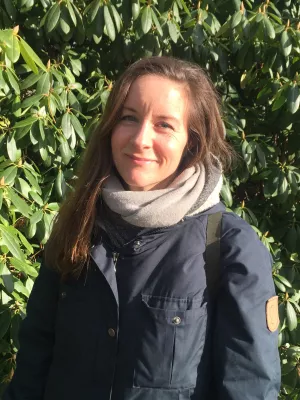
Maria von Post
Forskare

Oxidative stress in birds along a NOx and urbanisation gradient : An interspecific approach
Författare
Summary, in English
Urbanisation is regarded as one of the most threatening global issues for wildlife, however, measuring its impact is not always straight forward. Oxidative stress physiology has been suggested to be a useful biomarker of health and therefore, a potentially important indicator of the impact that urban environmental stressors, especially air pollution, can have on wildlife. For example, nitrogen oxides (NOx), released during incomplete combustion of fossil fuels, are highly potent pro-oxidants, thus predicted to affect either the protective antioxidants and/or cause oxidative damage to bio-molecules. To date, epidemiological modelling of the predicted association between oxidative stress and NOx exposure has not been performed in wild animals. Here, we address this short-coming, by investigating multiple oxidative stress markers in four common passerine bird species, the blue tit (Cyanistes caeruleus), great tit (Parus major), house sparrow (Passer domesticus) and tree sparrow (Passer montanus), living along a gradient of NOx and urbanisation levels in southern Sweden. First of all, the results revealed that long- and medium-term (one month and one week, respectively) NOx levels were highly correlated with the level of urbanisation. This confirms that the commonly used urbanisation index is a reliable proxy for urban air pollution. Furthermore, in accordance to our prediction, individuals exposed to higher long- and medium-term NOx levels/urbanisation had higher plasma antioxidant capacity. However, only tree sparrows showed higher oxidative damage (protein carbonyls) in relation to NOx levels and this association was absent with urbanisation. Lipid peroxidation, glutathione and superoxide dismutase levels did not co-vary with NOx/urbanisation. Given that most oxidative stress biomarkers showed strong species-specificity, independent of variation in NOx/urbanisation, the present study highlights the need to study variation in oxidative stress across contexts, seasons and life-stages in order to understand how the ecology and phylogeny of species interact to affect species resilience to urban environmental stress.
Avdelning/ar
- EpiHealth: Epidemiology for Health
- Evolutionary ecology
- Planetär hälsa
- Arbetsorganisation och hälsa
- BECC: Biodiversity and Ecosystem services in a Changing Climate
- Ekologisk och evolutionär fysiologi
Publiceringsår
2018-05-01
Språk
Engelska
Sidor
635-643
Publikation/Tidskrift/Serie
Science of the Total Environment
Volym
622-623
Länkar
Dokumenttyp
Artikel i tidskrift
Förlag
Elsevier
Ämne
- Evolutionary Biology
Nyckelord
- Air pollution
- Antioxidants
- Biomarkers
- Birds
- Nitrogen oxides
- Oxidative damage
Status
Published
Forskningsgrupp
- Planetary Health
- Environmental health and occupational health
- Life History and Functional Ecology
ISBN/ISSN/Övrigt
- ISSN: 0048-9697